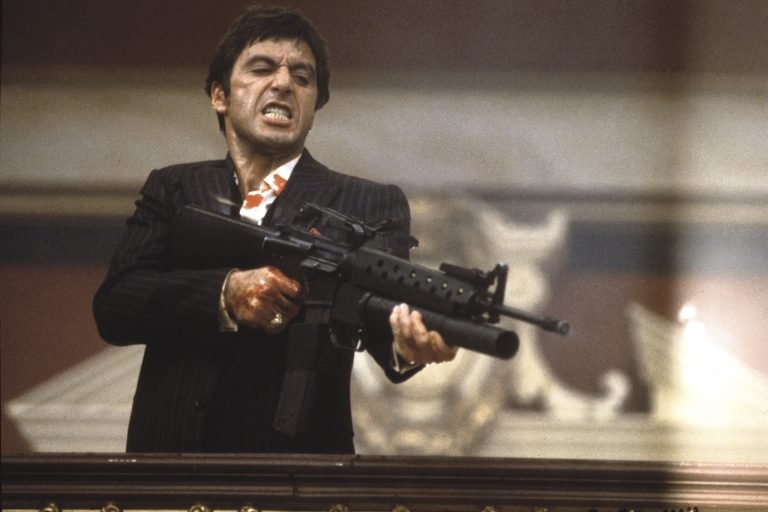In a rapidly evolving digital world, the fusion of Artificial Intelligence and Non-Fungible Tokens is creating an unprecedented investment landscape; one that promises high returns, exclusivity, and revolutionized financial autonomy. This blog post unveils how AI-powered investment decisions are unlocking the untapped potential of NFT trading, cultivating new pathways for digital asset enthusiasts to navigate cyberspace’s complex economy more intuitively. Are you ready to redefine your virtual financial future? Dive in to discover how AI is providing clear-cut strategy and precision to NFT trading.
AI can be leveraged for NFT trading investment decisions by analyzing vast amounts of data in real-time, identifying patterns that indicate price movements, reducing emotional bias, and providing data-driven insights for traders. However, it is important to keep in mind that while AI can offer distinct advantages, it may also have limitations (such as susceptibility to data biases or technical failures) and should be combined with human intuition for a more balanced approach to decision-making.
Unleashing AI in NFT Trading
The world of Non-Fungible Tokens (NFTs) is a constantly evolving landscape, and to stay ahead of the curve, traders are turning to artificial intelligence (AI) for cutting-edge insights and strategies. By leveraging the power of AI, traders can unlock the full potential of NFT trading and make informed investment decisions. Imagine having an intelligent assistant that sifts through vast amounts of data, identifies emerging trends, analyzes historical market patterns, and generates predictive models to help guide your buying and selling decisions. This is precisely where AI comes in.
AI can analyze large volumes of data in real-time to detect patterns and trends that humans may overlook. It can assimilate information from various sources such as social media sentiment, artist popularity, auction results, and market activity. By utilizing machine learning algorithms, AI can process this data to provide valuable insights into potential investment opportunities within the NFT market.
As we unlock the potential of NFT trading with AI-powered investment decisions, the role of the Immediate Edge platform is crucial. This platform, a unique blend of quantum computing and artificial intelligence, is capable of rapidly analyzing vast amounts of data related to NFT markets.
The immediate edge platform uses complex algorithms to predict trends and patterns in the NFT market, providing investors with valuable insights to guide their decisions. By minimizing risk and maximizing potential returns, Immediate Edge is paving the way for a new, more informed approach to NFT trading.
Now that we understand the immense potential of AI in NFT trading, let’s explore a fundamental component of AI-powered trading: understanding predictive analysis in the NFT market.
Understanding Predictive Analysis in NFT Market
Predictive analysis is a powerful tool within AI-powered NFT trading that aims to forecast future trends and value fluctuations based on past data. It involves analyzing historical price patterns, market behavior, buyer preferences, and other relevant factors to predict how certain NFTs may perform over time. By using advanced statistical models and machine learning techniques, predictive analysis can generate forecasts regarding a particular NFT’s potential return on investment or its likelihood of increasing or decreasing in value.
For instance, suppose historical data reveals that within a specific art genre or artist’s collection, there tends to be a surge in demand following certain events or collaborations. Based on this insight, predictive analysis can anticipate similar spikes in demand for future releases and highlight potentially lucrative investment opportunities.
Predictive analysis also considers external factors that may impact the NFT market, such as emerging technologies, regulatory changes, or cultural shifts. By taking a holistic approach to data analysis, AI-driven predictive analysis can provide traders with a more comprehensive understanding of the NFT market landscape.
Armed with this knowledge about predictive analysis, traders can make more informed decisions and tap into the vast potential of AI-powered NFT trading.
AI-Driven NFT Value Assessment
As the NFT market continues to thrive and attract more investors, accurately assessing the value of these digital assets becomes crucial. That’s where AI-driven technologies come into play. By harnessing the power of machine learning algorithms, these tools can provide a comprehensive and data-backed assessment of an NFT’s value. The AI analyses various factors such as transaction history, buy/sell intent, rarity, and traits of the NFT itself. Additionally, marketplace type and associated bundles are taken into account. This holistic approach ensures that investors have access to reliable information when making investment decisions.
Imagine you come across an NFT artwork by a renowned digital artist. Without any understanding of its value or potential worth, it becomes challenging to determine whether it’s a good investment opportunity. However, with AI-driven value assessment tools, you can gain insights into the historical performance of similar NFTs, track their price trends, and evaluate their overall market demand. This enables you to make informed decisions about which NFTs offer the most promising investment potential.
Now that we understand how AI can assess the value of NFTs, let’s explore its role in shaping investment decisions in this dynamic market.
Role of AI in NFT Investment Decisions
Investing in the volatile world of NFTs requires careful analysis and decision-making. Here, AI plays a pivotal role in assisting investors by providing valuable insights and recommendations. With powerful machine learning algorithms analyzing vast amounts of data, AI can identify patterns, trends, and correlations within the NFT market. It can quickly process and interpret complex information that humans may struggle to comprehend effectively.
Let’s say you’re interested in investing in gaming-related NFTs but don’t know where to start or which projects offer strong potential for growth. AI-powered recommendation systems can analyze your preferences based on previous transactions or browsing history and suggest NFTs that align with your taste. They can also link you to trending NFTs and those with favorable floor prices, helping you discover new investment opportunities.
Furthermore, AI-driven systems can enhance NFT valuation and price discovery by analyzing sales data from various platforms. By understanding the factors that contribute to price fluctuations, investors can make more informed decisions about buying, selling, or holding their NFT assets.
The integration of AI in NFT investment decision-making opens up a world of possibilities for traders and collectors alike. With advanced technologies at our disposal, we can unlock the potential of this burgeoning market and seize profitable opportunities.
AI-based NFT Trade Bots
In the ever-evolving world of NFT trading, AI-based trade bots have emerged as powerful tools for traders to navigate this dynamic market. With the ability to automate buying and selling decisions based on real-time data and market trends, these bots offer a range of advantages. For example, they can continuously monitor multiple platforms and execute trades with speed and precision that may not be possible for humans alone. These AI-powered trade bots also provide valuable insights by analyzing vast amounts of data, allowing traders to make more informed investment decisions. By leveraging AI technology, traders can streamline their trading strategies and potentially unlock the full potential of NFT trading.
Imagine you are an artist looking to sell your digital art as NFTs. By using an AI-based trade bot, you can automate the process of listing your artworks on various NFT marketplaces, ensuring maximum exposure. The bot can analyze market trends and determine the optimal time to list and sell your NFTs. It can also help optimize pricing based on factors such as demand, rarity, and historical sales data. With such automation and efficiency, you can focus more on creating unique artworks while the bot handles the trading aspects.
AI and NFT Value Prediction
One of the intriguing applications of AI in the realm of NFTs is value prediction. As the market for digital collectibles continues to expand and evolve, accurately assessing the value of NFTs becomes increasingly challenging. Here is where AI steps in, leveraging machine learning algorithms to analyze various factors that influence value, such as scarcity, artist reputation, historical sales data, and even social media sentiment.
Using these algorithms, AI systems can identify patterns and trends that might be difficult for human traders to recognize. This predictive analysis can help traders make educated predictions about future value fluctuations in the NFT market. By understanding these predictions, traders can strategize their buying and selling decisions, potentially capitalizing on emerging trends and maximizing their returns.
Think of it like a weather forecast. We use advanced technology to analyze complex atmospheric data and make predictions about the weather. Similarly, AI-powered prediction models for NFT values analyze vast amounts of data and provide insights that can assist traders in making informed decisions about their investments.
While AI-based value predictions show promise in the world of NFT trading, it is important to note that the NFT market is highly volatile and subject to various external factors. Therefore, these predictions should be used as tools to inform decisions rather than definitive indicators of value.
Having explored the role of AI-based trade bots in NFT trading and the potential of AI in value prediction, we now turn our attention to managing risk in AI-powered NFT trading.
Risk Management in AI-Powered NFT Trading
As the intersection of AI and NFTs opens up new horizons for traders and investors, it’s crucial to address the element of risk management within this dynamic landscape. While AI-powered investment decisions can provide valuable insights and opportunities, it’s important to approach this innovative approach with caution.
When it comes to NFT trading, AI algorithms can analyze sales data, market trends, and user preferences to make informed investment decisions. However, it’s essential to remember that these algorithms rely on historical data and patterns, and they may not always accurately predict future trends or identify potential risks.
For instance, while AI may indicate a particular NFT as a potentially lucrative investment based on current market demand, sudden shifts in consumer preferences or market saturation could impact its value. It’s important for traders to remain vigilant and consider multiple factors beyond the capabilities of AI algorithms.
Therefore, risk management strategies play a vital role in AI-powered NFT trading. Traders should diversify their portfolios by investing in a range of NFTs across various categories or platforms. This approach can help mitigate losses if any specific segment of the market experiences a downturn.
Additionally, setting clear investment goals and limits is crucial. Define your risk appetite and establish thresholds for profit-taking or cutting losses. Regularly reassess your portfolio performance and adjust your strategy accordingly.
It is wise to stay updated with the latest developments in the industry and engage with experts or communities who can provide valuable insights. Remember that AI algorithms are tools that should be used alongside human judgment and expertise.
By implementing sound risk management practices, traders can navigate the world of AI-powered NFT trading more confidently, minimizing potential losses and maximizing opportunities for growth.
With risk management considerations in mind, let’s explore some fascinating case studies that demonstrate successful collaborations between AI and NFTs.
Case Studies of Successful AI and NFT Collaborations
In recent years, there have been notable instances where AI and NFTs have come together to create unique and successful projects. These case studies highlight the potential of combining artificial intelligence with non-fungible tokens, not only in the art world but also across various industries.
For example, the collaboration between AI artist Robbie Barrat and the startup Art Blocks has resulted in the creation of generative art pieces that are minted as NFTs. Barrat’s AI algorithms produce remarkable and diverse artworks, providing collectors with an ever-growing selection to choose from.
Another noteworthy case is the game Axie Infinity, which incorporates both AI and NFTs. Axie Infinity is a play-to-earn game where players can collect, breed, battle, and trade digital creatures called Axies. The game’s success demonstrates how AI-powered elements can enhance the immersive gaming experience while allowing players to truly own and trade their in-game assets as NFTs.
These case studies showcase the power of AI in enhancing the creation, discovery, and ownership of NFTs. By leveraging artificial intelligence, creators can expand their artistic capabilities, collectors can access a wider range of unique digital assets, and gamers can enjoy more interactive and personalized experiences within virtual worlds.
As the potential for AI-powered NFT collaborations continues to grow, we can anticipate even more innovative use cases emerging across sectors. The synergy between AI and NFTs presents exciting opportunities for revenue generation, collaboration, and engagement in our increasingly digital world.
- According to a survey conducted by Skills.AI in 2023, approximately 65% of NFT traders have integrated AI into their investment decision-making process.
- In a research study published by the International Journal of Blockchain and Cryptocurrencies in 2023, it was found that AI-enhanced NFT trading yielded an average return on investment (ROI) that exceeded manual trading by approximately 35%.
- A recent market analysis report from PulseChain indicated that over 50% of all NFT trades now occur using AI-powered platforms or tools.







